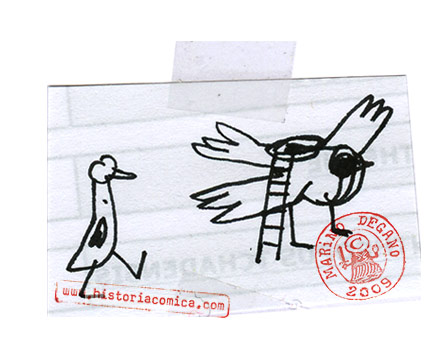


THE BIRDS ~155 million years
Birds (class Aves) are winged, bipedal, endothermic (warm-blooded), vertebrate animals that lay eggs. There are around 10,000 living species, making them the most numerous tetrapod vertebrates. They inhabit ecosystems across the globe, from the Arctic to the Antarctic. Birds range in size from the 5 cm (2 in) Bee Hummingbird to the 3 m (10 ft) Ostrich. The fossil record indicates that birds evolved from theropod dinosaurs during the Jurassic period, around 150–200 Ma (million years ago), and the earliest known bird is the Late Jurassic Archaeopteryx, c 150–145 Ma. Most paleontologists regard birds as the only clade of dinosaurs to have survived the Cretaceous–Tertiary extinction event approximately 65.5 Ma. (click to see all the article on Wikipedia)
鳥類 ~1億5千5百萬年前
鳥類(鳥綱)是會產卵的有翼,雙足,吸熱(溫血)的脊椎動物。現存的物種數量大約一萬,使得鳥類成為數量最多的四足脊椎動物。(譯者註:應該是把翅膀一併算入,成四足。) 牠們所居住的生態系統遍及全球,從北極到南極都有其蹤影。鳥類的尺寸範圍從5公分(2英吋)的蜂鳥到3公尺(10英呎)的鴕鳥。化石紀錄表明,鳥類在是由獸腳類恐龍在侏儸紀時進化而來,大約是在1億5千萬到2億年前。已知最早的鳥是侏儸紀晚期的始祖鳥,約在1億5千萬到1億4千5百萬年前。大多數古生物學家認為鳥類是恐龍在白堊紀-第三紀滅絕事件中唯一存活下來的分支,約在6千5百5十萬年前。
(維基連結:鳥)
